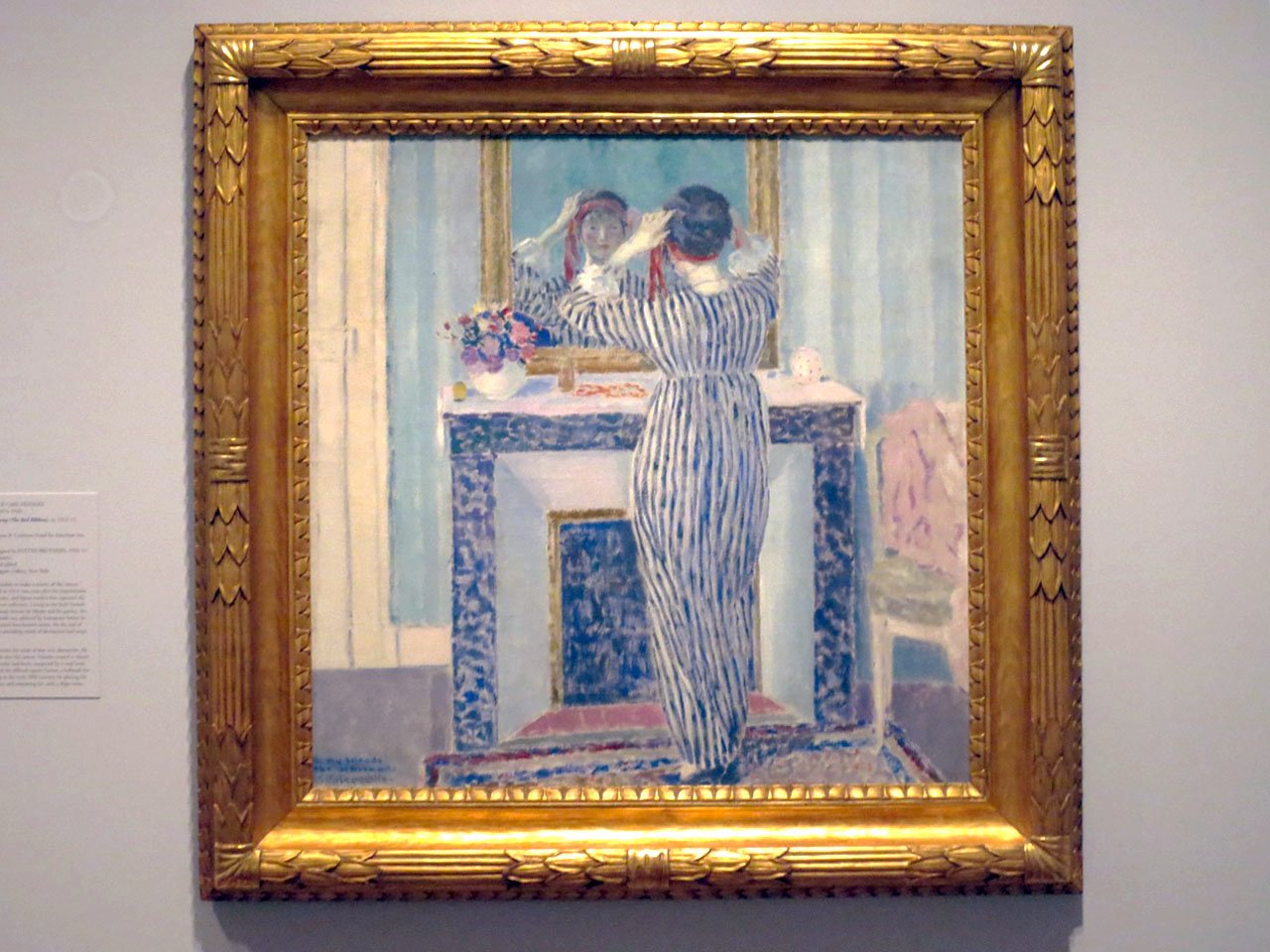FEITELSON - FITZGERALD – FRANCIS – FRANSIOLI – FRIESEKE – FREUD
Please check this page again as we continue to update with more artists framed by Gill & Lagodich in both period and replica frames.
Artists are listed alphabetically.
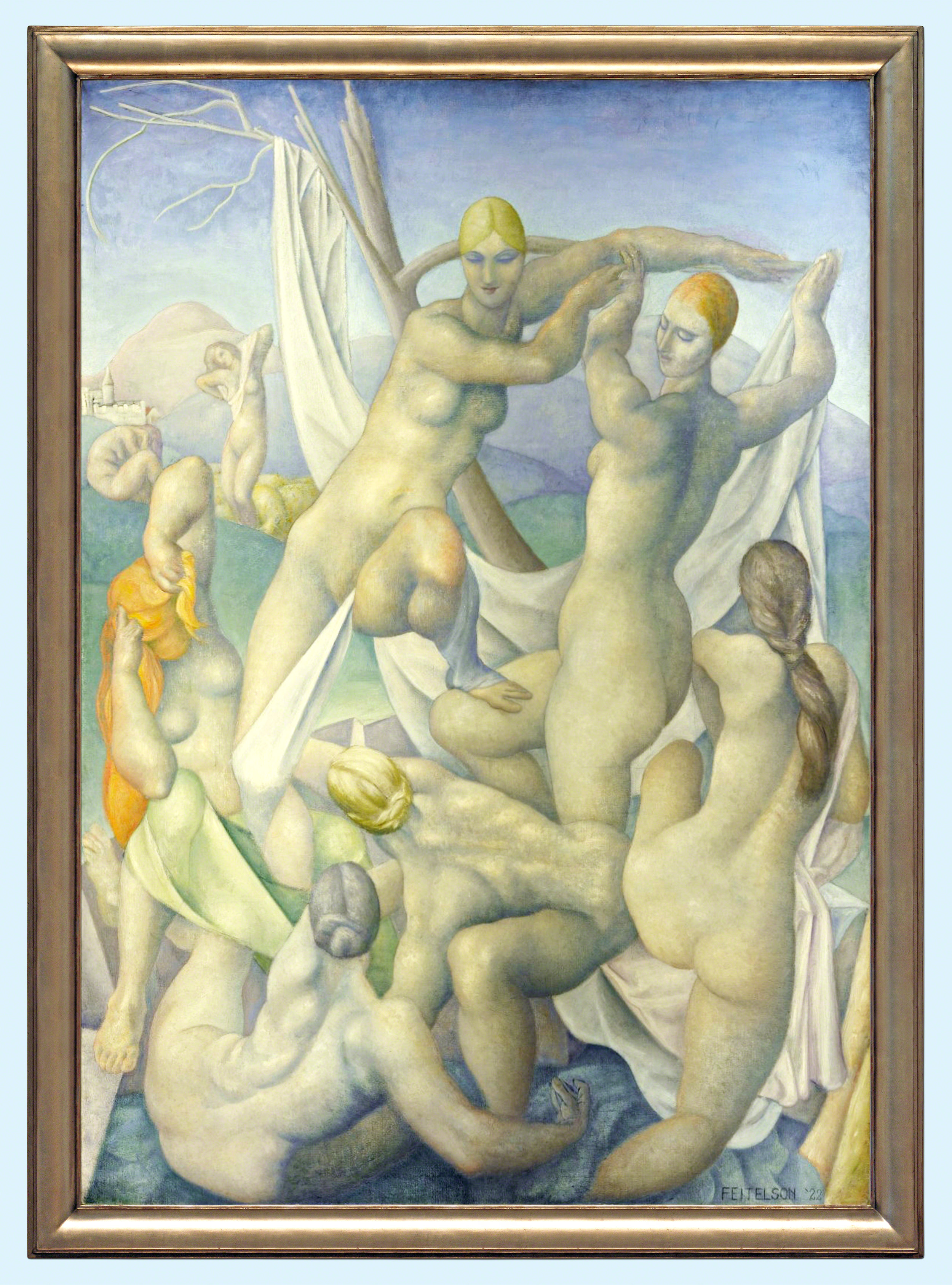
I. LORSER FEITELSON (1898–1978)
“Diana at the Bath”, 1922, oil on canvas, 98-1/2" x 69-3/8" Framed by Gill & Lagodich for the Brooklyn Museum. Custom-made variation of c. 1930s American Modernist painting frame, wide reverse wave profile, water gilded and patinated palladium leaf on wood. Molding Width: 3-3/8” "Like many 1920s figure painters, Lorser Feitelson attempted to interpret the ideal, or perfected, human form in a distinctly modern way. In this mythological subject, he based the exuberantly contoured figures and complex, dance-like composition on the style of sixteenth-century Italian Mannerism and its nineteenth-century French heir, Jean-Auguste-Dominique Ingres. Working in Paris, Feitelson no doubt was aware that Picasso had already moved in this classical direction, creating beautifully outlined figures inspired by classical sculpture and Renaissance painting. Although the painting’s chalky, fresco-like colors also refer to Renaissance art, the figures are lithe, athletic, and unmistakably modern. By the time he presented this painting to the Museum in 1924, Feitelson lived on Prospect Place in Brooklyn." — Brooklyn Museum, permanent collection label.
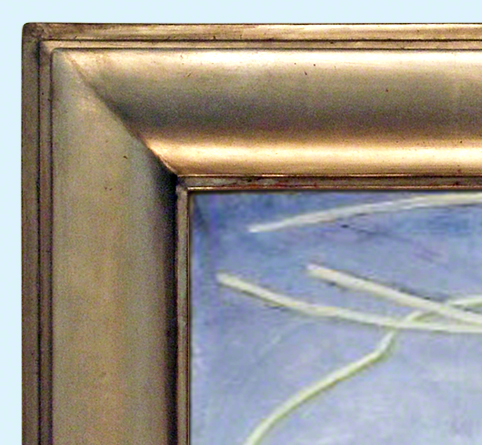
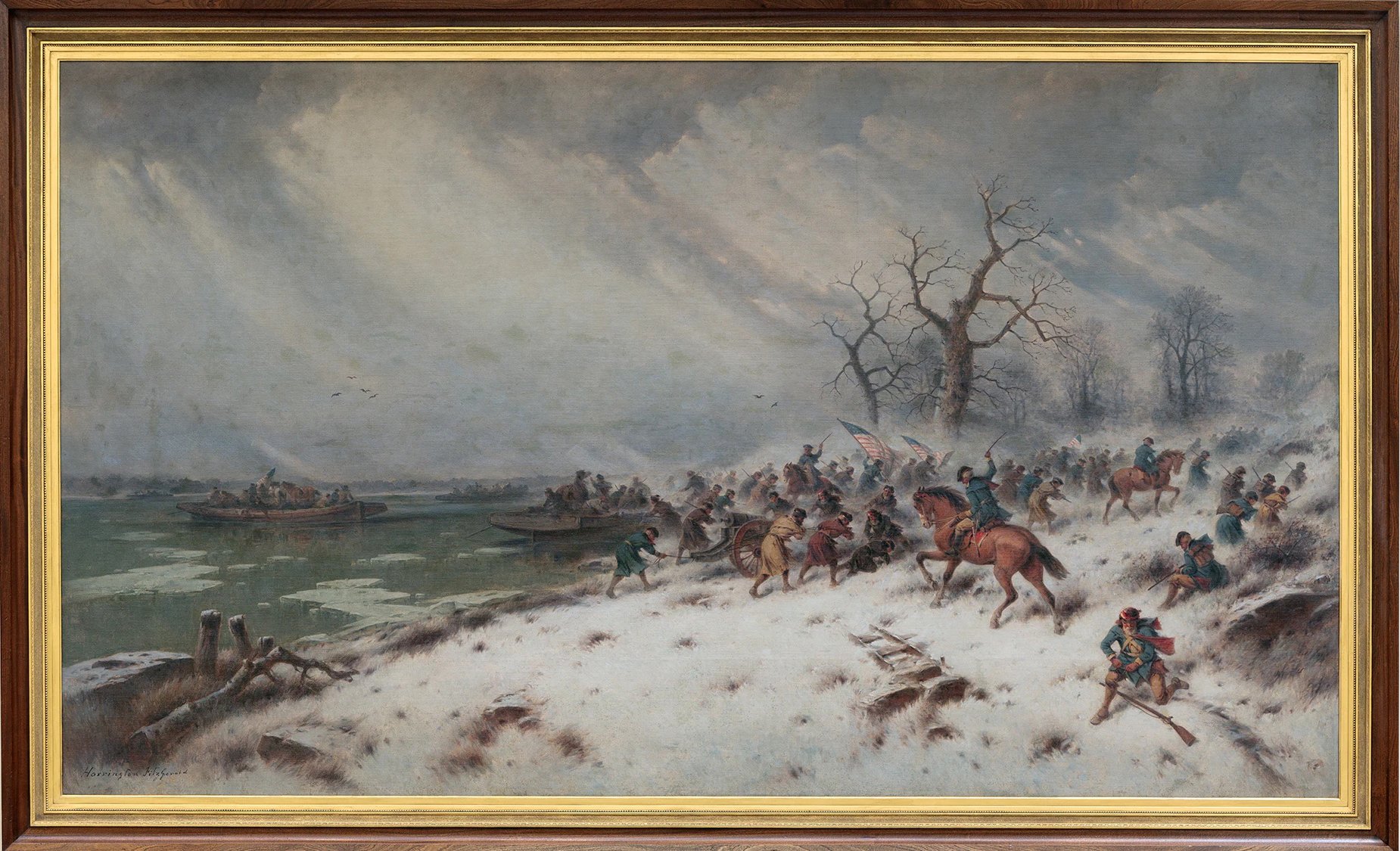
HARRINGTON G. FITZGERALD (1847–1930)
Washington Crossing the Delaware, 1870s-1890s, oil on canvas, 84 x 144 in. Framed by Gill & Lagodich for the Museum of the American Revolution. Custom-made replica second-half 19th-century frame, stained bass wood with solid mahogany wide flat cap and wide scotia; gilded inner molding, applied composition ornament, sand panel, molding width 6 in. “American artist Harrington G. Fitzgerald painted this version of General George Washington’s famous 1776 crossing of the Delaware River about 100 years after the Revolutionary War. Instead of showing the actual crossing of the Delaware, Fitzgerald shows the Continental Army soldiers on the New Jersey side of the river as they regroup and prepare to march on Trenton. Fitzgerald spent much of his life working for a family-owned newspaper, but he found relief from the stresses of his professional life in painting. He studied painting under several notable American artists, including Thomas Eakins and John Singer Sargent. Fitzgerald is best known for his works depicting the landscape of Valley Forge.” —museum didactic label



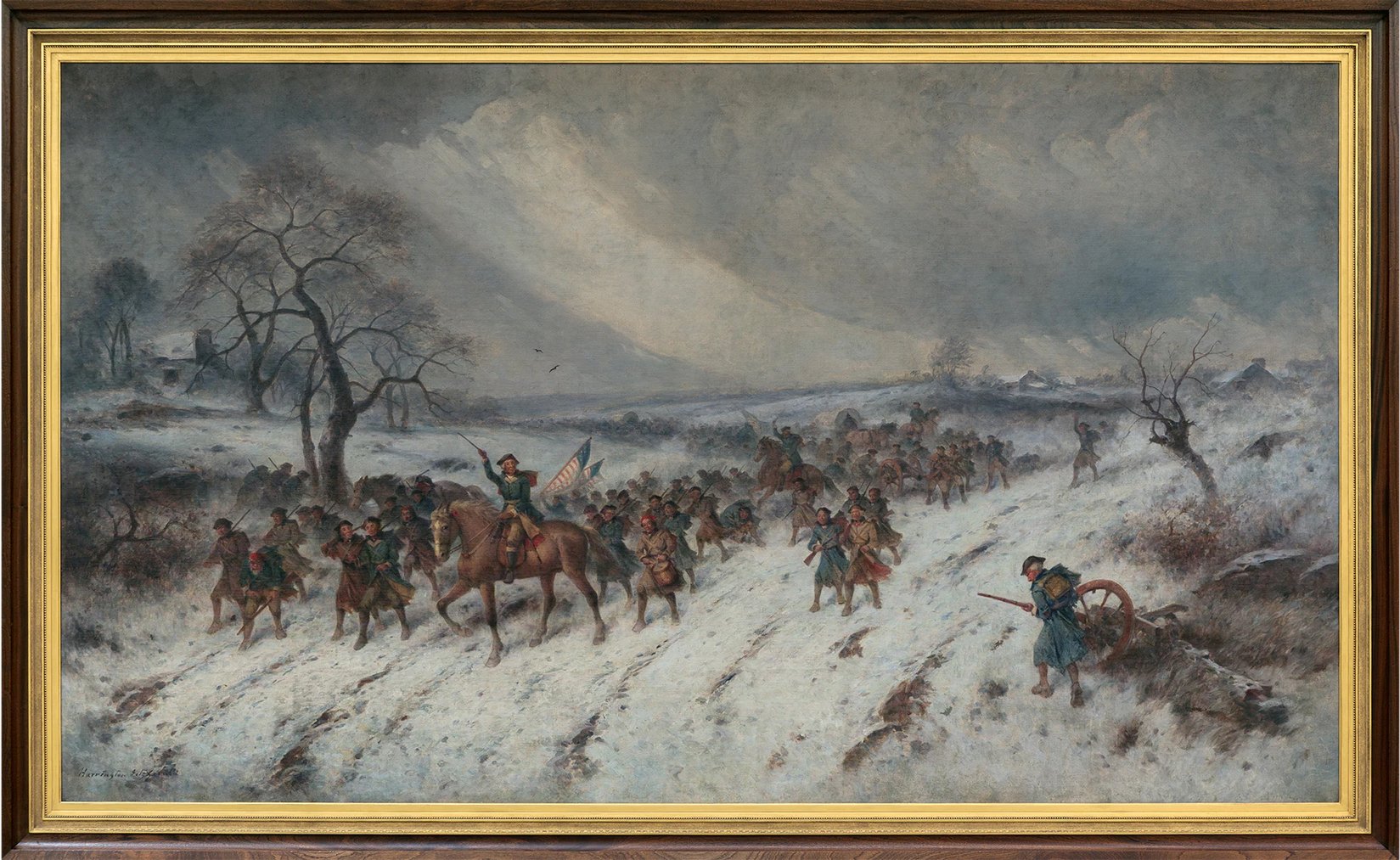
HARRINGTON G. FITZGERALD (1847–1930)
Valley Forge Winter, The Return of the Foraging Party, 1880–1900, oil on canvas, 84 x 144 in. Framed by Gill & Lagodich for the Museum of the American Revolution. Custom-made replica second-half 19th-century frame, gilded applied ornament and sand, mahogany and bass wood, molding width 6 in. “The 1777-1778 winter encampment at Valley Forge became synonymous with hunger, deprivation, and cold, all feelings expressed in this painting by American artist Harrington G. Fitzgerald (1847-1930). This bleak scene shows a foraging party of Continental Army soldiers returning to camp after searching the countryside for food and other necessities. Fitzgerald spent much of his life working for a family-owned newspaper, but he found relief from the stresses of his professional life in painting. He studied painting under several notable American artists, including Thomas Eakins and John Singer Sargent. Fitzgerald is best known for his works depicting the landscape of Valley Forge.” —museum didactic label

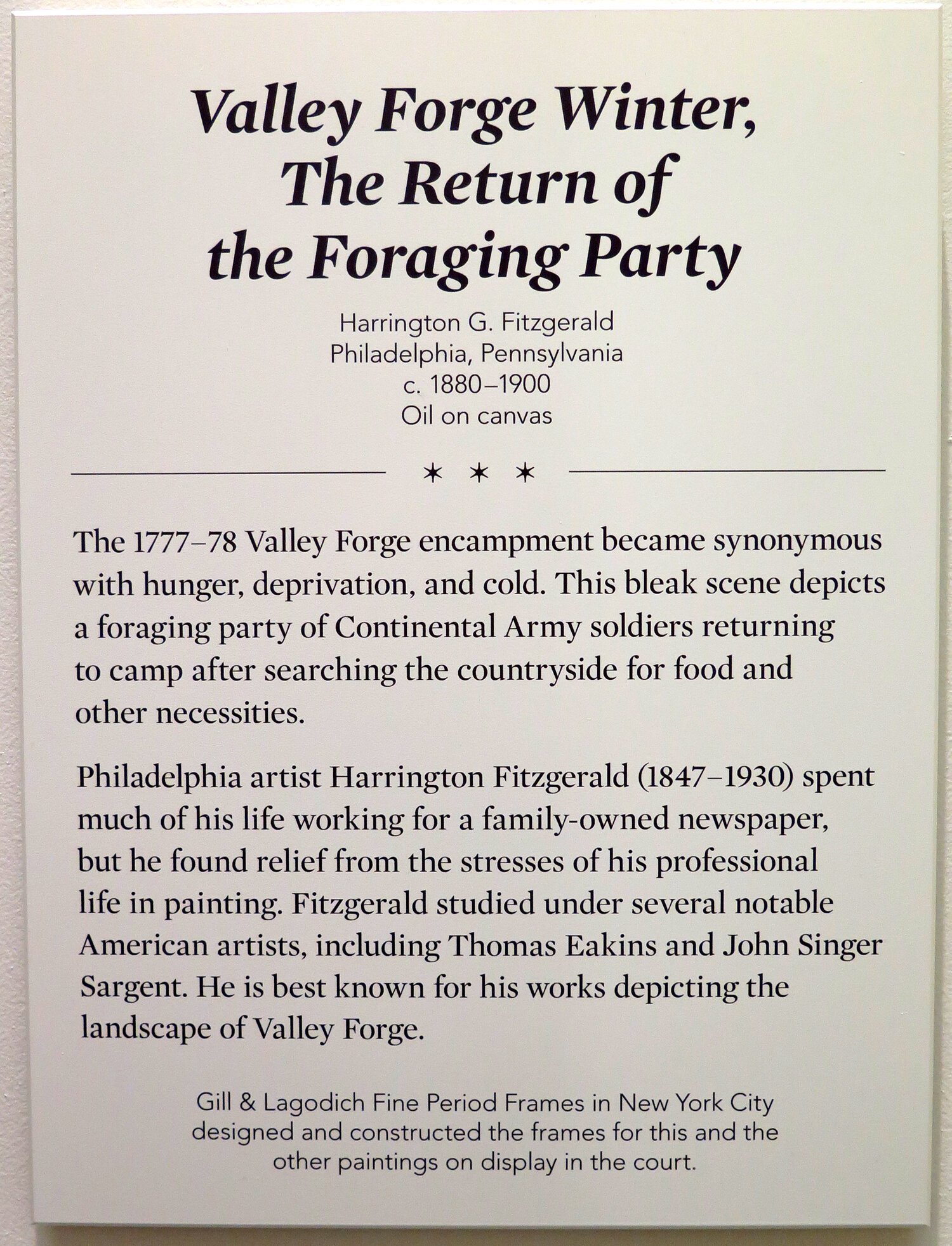
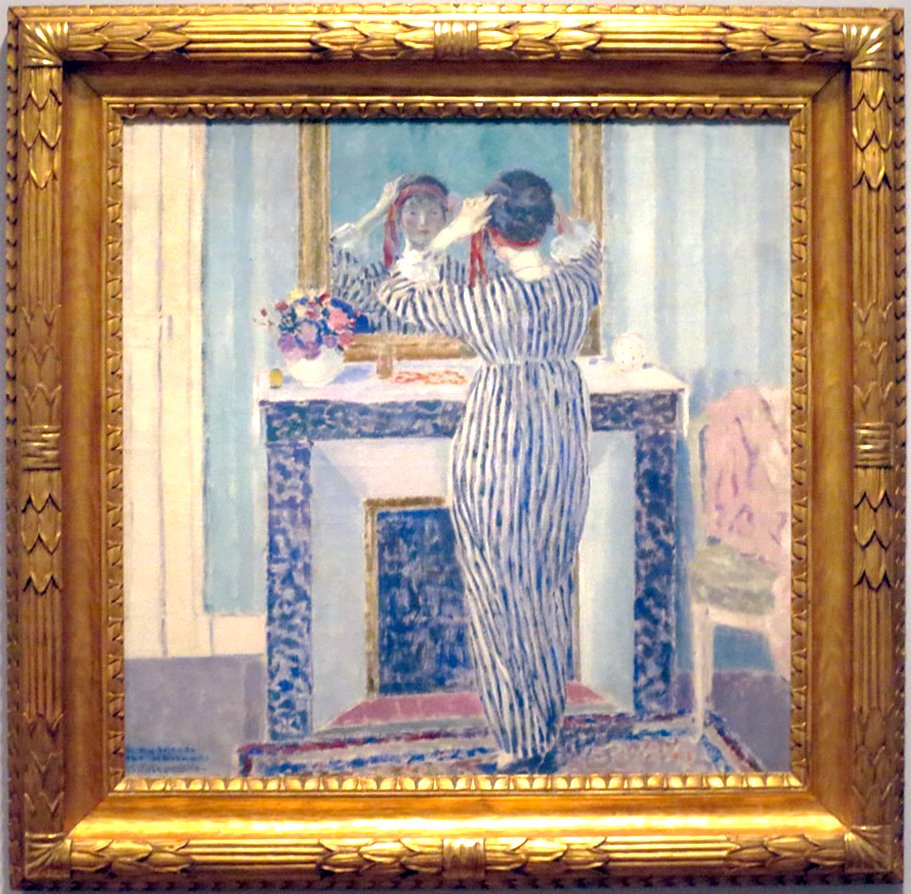
FREDERICK CARL FRIESEKE 1874 –1939
Blue Interior: Giverny (The Red Ribbon), ca. 1912-13, oil on canvas, 32 × 32 in. Period c. 1910-15 American Arts & Crafts painting frame; Foster Brothers, Boston, makers; gilded hand-carved wood; Neo-classical design, molding width 5-1/4 in. "I try as much as possible to make a mirror of the canvas,” Frieseke commented in 1914, two years after his impressionist interiors, garden scenes, and figure studies first captured the attention of American collectors. Living in the little French village of Giverny, made famous by Monet and his garden, the Michigan-born Frieseke was admired by Europeans before he became one of America’s best-known artists. By the end of his life, however, the prevailing winds of abstraction had swept him aside. Yet Blue Interior contains the seeds of that very abstraction. By dragging a dry brush over the canvas, Frieseke created a vibrant surface of pattern, color, and form tempered by a cool luminosity. He controlled the difficult square format, a hallmark for modernist thinking in the early 20th century, by placing his subject just off center and animating her with a slight twist.” —museum didactic label Painting: J. Harwood and Louise B. Cochrane Fund for American Art.


